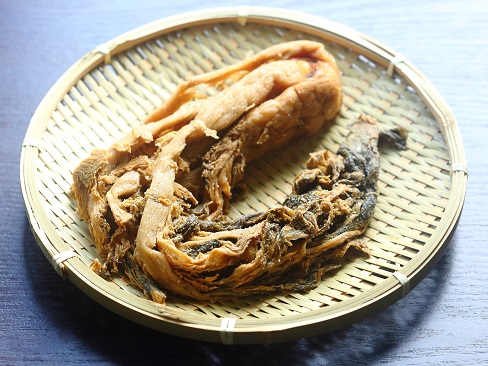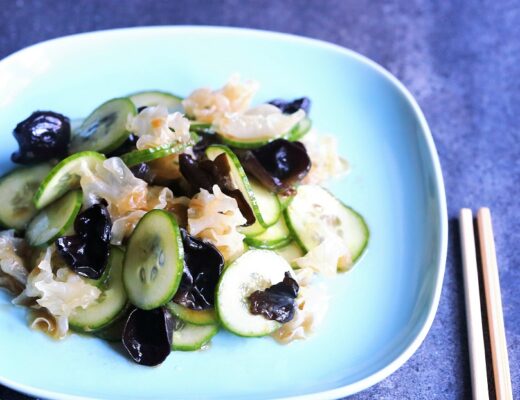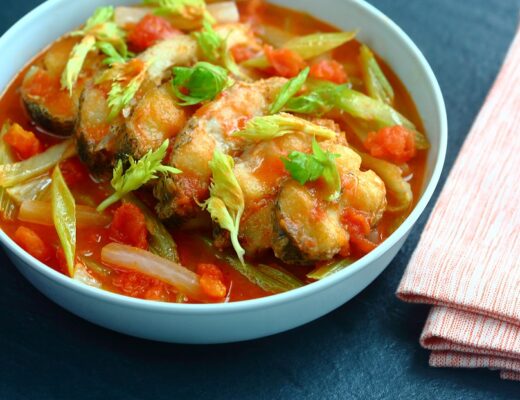Last Updated on September 29, 2020 by Simon Fan
The Hakka People (ke jia ren 客家人 in Mandarin) are Han Chinese who originally migrated from northern China to southern regions to escape wars centuries ago. Some even immigrated to other countries, notably to Southeast Asia.
Literally “people from the guest families,” the Hakkas demonstrated their incredible fearlessness and strength in surviving and prospering in the new places they settled. Their unique dwellings, mostly in remote mountainous areas, are called tulou (土楼), meaning “earth building.” Designated by UNESCO as World Heritage Site, the tulou can be round or squire, and were designed as both a fortress for defensive purposes and a large multi-family communal living structure, typically consisting of only one entrance and no windows at the ground level. I visited a tulou in Fujian Province a few years ago and was blown away by the architectural marvel created by the Hakkas.
The food of the Hakkas, not surprisingly, carries the same traits of its people: robust and vibrant. Hakka cuisine is known for using preserved meat and vegetables, which provide rich and strong seasonings to the dishes and make them irresistibly fragrant.
 One of my favorite Hakka ingredients is mui choy (梅菜), which is a type of preserved mustards. Packed with salty, sweet, and umami tastes and intense aroma, mui choy lends layers of flavor to a dish. In Hakka cuisine, it’s often paired with pork. Braised pork with mui choy is hearty and comforting, especially when it’s cold outside. A steamed version, which I’m introducing here, is lighter and quicker to prepare, a perfect dish to make in hot or warm weather.
One of my favorite Hakka ingredients is mui choy (梅菜), which is a type of preserved mustards. Packed with salty, sweet, and umami tastes and intense aroma, mui choy lends layers of flavor to a dish. In Hakka cuisine, it’s often paired with pork. Braised pork with mui choy is hearty and comforting, especially when it’s cold outside. A steamed version, which I’m introducing here, is lighter and quicker to prepare, a perfect dish to make in hot or warm weather.
While mui choy gives this dish its unique character, the pork plays an equally important role. To have a successful dish, you want to use a piece of pork with at least 20% fat, and ideally chop the meat to a coarse-ground texture by hand (or ask your butcher to grind it coarsely for you). This ensures the cooked meat turns out juicy and flavorful with a meaty texture. By comparison, most store-bought ground meat is finely ground, which tends to be dense and paste-like and becomes dry and mealy when cooked.
You can find mui choy in most Asian grocery stores. It’s often labeled as “preserved mustard” or “preserved vegetable.” Be aware that there is a different, much drier variety of preserved vegetable called meigan cai (梅干菜), which would require different preparations and is not suitable for this recipe.
Hakka steamed pork with mui choy (客家梅菜蒸肉)
Serves 2
Ingredients
11 oz (310 g) pork, preferably at least 20% fat, hand-chopped to a coarse-ground texture (or ask your butcher to grind it coarsely)
⅛ teaspoon salt
1 teaspoon potato starch or cornstarch, mixed with 2 teaspoons water
1 teaspoon Shaoxing wine
¼ teaspoon sugar
Freshly ground white pepper
6 oz (170 g) mui choy (see note below), stems and leaves soaked in cold water for 1 hour
Half of 2-inch (5 cm) piece of ginger, cut into 2-inch-long (5 cm) thin matchsticks
1 teaspoon sesame oil
1 scallion, thinly sliced
Directions
- In a large bowl, mix the pork with the salt until sticky, about 1 minute. Add the starch slurry, wine, sugar, and a few grinds of pepper. Mix well.
- Squeeze to remove excess water from the soaked mui choy. Remove any tough bits from the stems, and thinly slice the stems and leaves. Add the mui choy to the pork, and stir to combine well.
- In an 8-inch heatproof shallow bowl, spread the mixture into a round cake shape. Use a pair of chopsticks to poke the mixture to loosen it up so it’s not tightly packed. Spread the ginger on top.
- Place the bowl in a steamer, and steam over high heat until the meat is just cooked through, about 8 minutes. You can serve the dish hot or warm. Drizzle with the sesame oil and garnish with the scallion right before serving.
Note: There are two types of mui choy—the salty type preserved in salt, and the salty-sweet one preserved in both salt and sugar. The salty-sweet mui choy is more commonly available in Chinese grocery stores and is the preferred type for this recipe, though the salty one works too. You can determine the type of moi choy by checking whether sugar is included in the list of ingredients.




Steamed butternut squash with meigan cai and pork
December 17, 2021 at 10:00 AM[…] the Chinese characters for it on the package. Do not confuse meigan cai with mui choy (see my post here), a fantastic preserved vegetable used often in Hakka […]